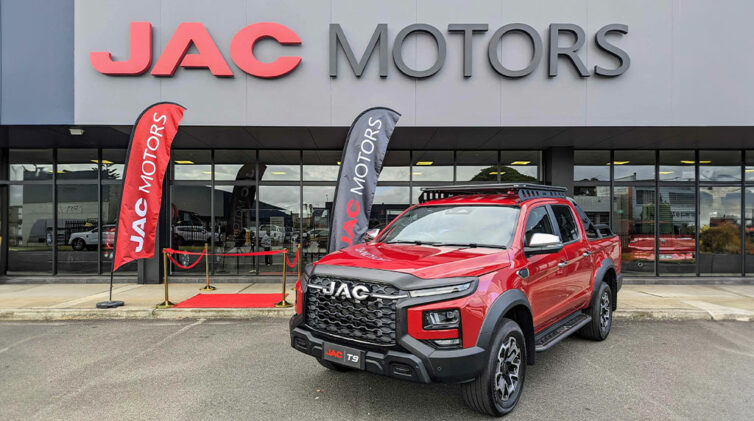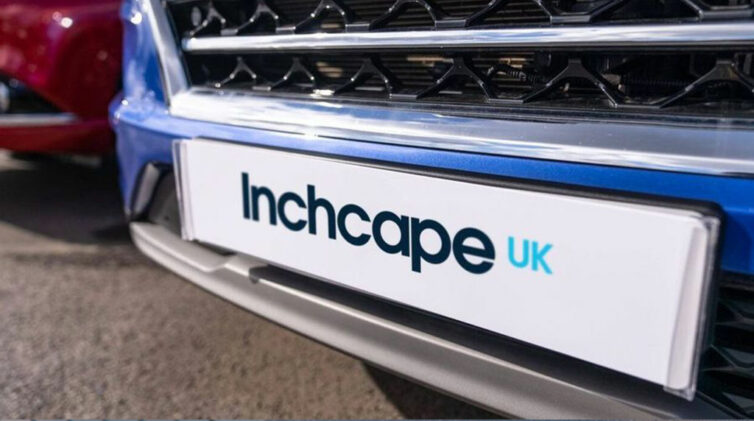But its research shows that population-dense areas of the major markets with a large, established vehicle base “are fertile ground for these new mobility services, and many cities and suburbs of Europe and North America fit this profile.”
As consumers adopt these services, private car ownership will be affected.
The report discusses changes in global economies and the rise of digitisation, increasing automation, and new business models that have revolutionised industries. “These forces are giving rise to four disruptive technology-driven trends in the automotive sector: diverse mobility, autonomous driving, electrification, and connectivity,” it said.
“These forces are giving rise to four disruptive technology-driven trends in the automotive sector: diverse mobility, autonomous driving, electrification, and connectivity,” it said.
“Most industry players and experts agree that the four trends will reinforce and accelerate one another, and that the automotive industry is ripe for disruption.
“Given the widespread understanding that game-changing disruption is already on the horizon, there is still no integrated perspective on how the industry will look in 10 to 15 years as a result of these trends.
“To that end, our eight key perspectives on the ‘2030 automotive revolution” are aimed at providing scenarios concerning what kind of changes are coming and how they will affect traditional vehicle manufacturers and suppliers, potential new players, regulators, consumers, markets, and the automotive value chain.”
McKinsey’s report said that changing consumer preferences, tightening regulation and technological breakthroughs will add up to a fundamental shift in individual mobility behaviour.
“Individuals are increasingly using multiple modes of transportation to complete their journey and goods and services are delivered to, rather than fetched by, consumers,” it said.
“As a result, the traditional business model of car sales will be complemented by a range of diverse, on-demand mobility solutions, especially in dense urban environments that proactively discourage private-car use.”
The report also said that consumers are increasingly using tailored solutions for each transport purpose, leading to new segments of specialised vehicles designed for very specific needs.
“For example, the market for a car specifically built for e-hailing services—that is, a car designed for high use, robustness, additional mileage, and passenger comfort—would already be millions of units today,” the report said.
“And this is just the beginning.”
“As a result of this shift to diverse mobility solutions, up to one out of 10 new cars sold in 2030 may likely be a shared vehicle, which could reduce sales of private-use vehicles.
“This would mean that more than 30 per cent of kilometres driven in new cars sold could be from shared mobility.
“On this trajectory, one out of three new cars sold could potentially be a shared vehicle as soon as 2050.”
McKinsey’s report said that this would significantly alter the automotive revenue pool.
“This could create up to $A2.2 trillion — or 30 per cent more — in additional revenue potential in 2030, compared with about $A7.6 trillion from traditional car sales and aftermarket products/services, up by 50 per cent from about $A5 trillion in 2015.”
As mobility services nip into new-vehicle sales and private ownership, McKinsey said any decrease was likely to be offset by increased sales in shared vehicles that need to be replaced more often due to higher use and related wear and tear.
In addition, with growth in established automotive markets slowing, future sales increases will be borne by emerging economies, particularly China.
“The remaining driver of growth in global car sales is the overall positive macroeconomic development, including the rise of the global consumer middle class,” its ‘Automotive Revolution – Perspective Towards 2030’ report said.
“Consumers today use their cars as all-purpose vehicles, whether they are commuting alone to work or taking the whole family to the beach.
“In the future, they may want the flexibility to choose the best solution for a specific purpose, on demand and via their smartphones. “We already see early signs that the importance of private-car ownership is declining.
“We already see early signs that the importance of private-car ownership is declining.
“In the US, for example, the share of young people (aged 16 to 24 years) who hold a driver’s licence dropped from 76 per cent in 2013 to 71 per cent in 2020, while there has been more than 30 per cent annual growth in car-sharing members in North America and Germany over the past five years.”
The change in vehicle ownership and purpose, along with the rise in connectivity as it leads to vehicle autonomy, will increasingly allow the car to become a platform for drivers and passengers to “use their time in transit to consume novel forms of media and services or dedicate the freed-up time to other personal activities.”
“The increasing speed of innovation, especially in software-based systems, will require cars to be upgradable,” McKinsey said.
“As shared mobility solutions with shorter life cycles will become more common, consumers will be constantly aware of technological advances, which will further increase demand for upgradability in privately used cars as well.
“As cars are increasingly integrated into the connected world, car-makers will have no choice but to participate in the new mobility ecosystems that emerge as a result of technological and consumer trends.”
McKinsey said that fully-autonomous vehicles were unlikely to be commercially available for some time.
“Meanwhile, advanced driver-assistance systems (ADAS) will play a crucial role in preparing regulators, consumers, and corporations for the medium-term reality of cars taking over control from drivers,” it said.
“The market introduction of ADAS has shown that the primary challenges impeding faster market penetration are pricing, consumer understanding, and safety/security issues.
“Regarding technological readiness, tech players and start-ups will likely also play an important role in the development of autonomous vehicles.
“Regulation and consumer acceptance may represent additional hurdles for autonomous vehicles.
“However, once these challenges are addressed, autonomous vehicles will offer tremendous value for consumers (for example, the ability to work while commuting, or the convenience of using social media or watching movies while travelling).
“A progressive scenario would see fully autonomous cars accounting for up to 15 per cent of passenger vehicles sold worldwide in 2030.”
Electrification is seen as continuing its expansion into traditional ICE segments.
McKinsey said that stricter emission regulations, lower EV battery costs, more widely available charging infrastructure and increasing consumer acceptance will create new and strong momentum for penetration of electrified vehicles (hybrid, plug-in, battery electric, and fuel cell) in the coming years.
“The speed of adoption will be determined by the interaction of consumer pull (partially driven by total cost of ownership) and regulatory push, which will vary strongly at the regional and local level,” it said.
“In 2030, the share of electrified vehicles could range from 10 per cent to 50 per cent of new-vehicle sales.
“Adoption rates will be highest in developed dense cities with strict emission regulations and consumer incentives (tax breaks, special parking and driving privileges, discounted electricity pricing, et cetera).
“Sales penetration will be slower in small towns and rural areas with lower levels of charging infrastructure and higher dependency on driving range.
“Through continuous improvements in battery technology and cost, those local differences will become less pronounced, and electrified vehicles are expected to gain more and more market share from conventional vehicles.
“With battery costs potentially decreasing to $A220 to $A300 per kilowatt-hour over the next decade, electrified vehicles will achieve cost competitiveness with conventional vehicles, creating the most significant catalyst for market penetration.
“At the same time, it is important to note that electrified vehicles include a large portion of hybrid electrics, which means that even beyond 2030, the internal-combustion engine will remain very relevant.”
In its optimism about the future, McKinsey’s report said that diverging markets will open opportunities for new players, which will initially focus on a few selected steps along the value chain and target only specific, economically attractive market segments—and then expand from there.
“While Tesla, Google, and Apple currently generate significant interest, we believe that they represent just the tip of the iceberg,” it said.
“Many more new players are likely to enter the market, especially cash-rich high-tech companies and start-ups.
“These new entrants from outside the industry are also wielding more influence with consumers and regulators – that is, generating interest around new mobility forms and lobbying for favourable regulation of new technologies.
“Similarly, some Chinese car manufacturers, with impressive sales growth recently, might leverage the ongoing disruptions to play an important role globally.”
The report said that leverage partnerships would transform the automotive industry from competition among peers toward new competitive interactions.
“To succeed, automotive manufacturers, suppliers, and service providers need to form alliances or participate in ecosystems — for example, around infrastructure for autonomous and electrified vehicles,” it said.
“OEMs also need to align their skills and processes to address new challenges like software-enabled consumer value definition, cybersecurity, data privacy, and continuous product updates.”
There also needs to be attention paid to the value proposition of the car.
McKinsey said car manufacturers must further differentiate their products/services and change their value proposition from traditional car sales and maintenance to integrated mobility services.
“This will put them in a stronger position to retain a share of the globally growing automotive revenue and profit pool, including new business models such as online sales and mobility services, and cross-fertilizing the opportunities between the core automotive-business and new mobility-business models.”
The report was written by Paul Gao, a director in McKinsey’s Hong Kong office; Hans-Werner Kaas, a director in the Detroit office; Detlev Mohr, a director in the Stuttgart office; and Dominik Wee, a principal in the Munich office.
It is available here: McKinsey Report
By Neil Dowling














 Read More: Related articles
Read More: Related articles

